
|
Materials at Extremes Research Group http://s.uconn.edu/meseminar12/20/21 Abstract: Materials are being asked to perform at “extremes” with increased inlet pressures and temperatures in industrial and aero gas turbines, the rise of hypersonic flight, and new Generation IV fission and ITER Fusion reactor concepts. There is a need to develop advanced manufacturing techniques to fabricate extreme environment materials, components, and geometries not […] Keywords: |
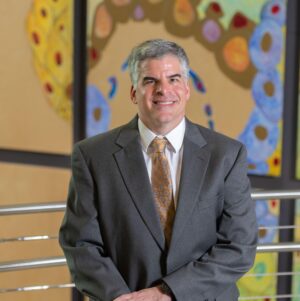
|
Bioengineered Synthetic Hydrogels for Regenerative Medicine http://s.uconn.edu/meseminar12/10/21 Abstract: Hydrogels, highly hydrated cross-linked polymer networks, have emerged as powerful synthetic analogs of extracellular matrices for basic cell studies as well as promising biomaterials for regenerative medicine applications. A critical advantage of these synthetic matrices over natural networks is that bioactive functionalities, such as cell adhesive sequences and growth factors, can be incorporated […] Keywords: |

|
SOFT ELECTRONICS FOR MOBILE HEALTH AND HUMAN-CENTERED ROBOTICS http://s.uconn.edu/meseminar12/3/21 Abstract: Internet of things (IoT), robotics, big data and artificial intelligence (AI) hold the key to Industry 4.0, which is identified as cyber-physical systems. To stay relevant in the AI age, humans must collaborate with robots or even merge with electronics and machines to realize internet of health (IoH), augmented reality (AR), and augmented […] Keywords: |
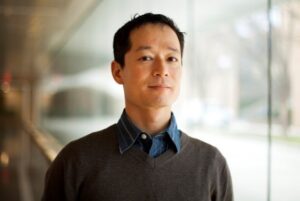
|
http://s.uconn.edu/meseminar11/12 Abstract: This talk presents a manufacturability-driven, multi-component topology optimization (MTO) framework for simultaneous design and partitioning of structures assembled of multiple components. Constraints on component geometry imposed by chosen manufacturing processes are incorporated in the conventional density-based topology optimization, with additional design variables specifying fractional component membership that enables continuous relaxation of otherwise discrete […] Keywords: |
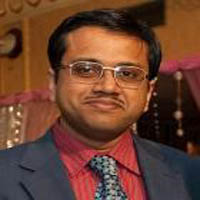
|
Droplets: An account of transport processes across multiple spatio-temporal scales http://s.uconn.edu/meseminar11/19/21 Password: 1234 Abstract: I will provide an account of the interesting dynamics exhibited by droplets at multiple length and time scales in completely different domains, namely gas turbines and COVID-19. In the first part of my talk, I will provide some insights into the dynamics of spray-swirl interaction with particular focus on droplet transport, […] Keywords: |

|
Effects of Muscle Activity on Multiscale Tensile Mechanics and Structure of Embryonic Tendons http://s.uconn.edu/meseminar11/5/21 Abstract: While there is significant interest in using tissue engineering techniques to create tendon and ligament replacements, no engineered biomaterial has been successful in replicating their physiological function. This is because there is a fundamental lack of understanding of how to produce a robust tensile load-bearing biological tissue. Previous work suggests that tendon maturation […] Keywords: |

|
Toward High-Performance Redox Flow Batteries for Grid-Scale Energy Storage http://s.uconn.edu/meseminar10/29/21 Abstract: Redox flow batteries (RFBs) are an emerging energy storage technology that offers unique advantages for long-duration, grid-scale energy storage due to their ability to decouple energy and power ratings and the associated unprecedented scalability. Despite their promise, the relatively higher capital cost of RFBs limits their commercial viability and widespread adoption. One possible […] Keywords: |

|
Design for Additive Manufacturing – from pure complexity to multi-functionality https://s.uconn.edu/meseminar10/15/21 Abstract: Since Additive Manufacturing (AM) processes can fabricate complex part shapes and material compositions, it released significant amount of freedom for designers to design innovative products. In general, parts that are good candidates for AM tend to have complex geometries, low production volumes, special combinations of properties or characteristics. Most of existing design methods […] Keywords: |
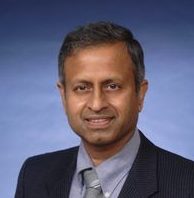
|
Emergence of Biotechnology Platforms During COVID-19: A Lesson in Modern Biology http://s.uconn.edu/meseminar10/8/21 Abstract: The COVID-19 pandemic has accelerated the development and manufacturing of vaccines at an unprecedented speed. This has been enabled by the emergence of biotechnology platforms such as mRNA and Viral Vectors. In this seminar, I will outline the engineering aspects of such platforms and the modern biology behind their evolution. Biographical Sketch: Dr. […] Keywords: |

|
A Methodical Approach to System Architecture http://s.uconn.edu/meseminar10/1/21 Abstract: The development of aerospace products suffers from chronic cost and schedule overruns and derivative designs, while innovative products are needed on time and on budget. We’ll examine the primary failure modes of conventional system-architecting practice that have led to these symptoms and how to avoid them. We’ll consider how to answer the 5 […] Keywords: |
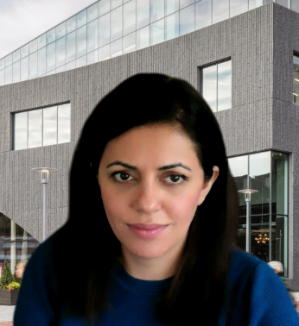
|
Mechanical Safety of Lithium-ion batteries for Electric Vehicle Applications http://s.uconn.edu/meseminar9/24 Password: 1234 Abstract: Lithium-ion batteries have been used extensively in the past decade in a variety of applications from portable devices to airplanes and electric vehicles. Battery packages used in electric vehicles experience dynamic loadings, shocks, and large deformations during normal operation as well as in a crash scenario. It is of paramount importance […] Keywords: |

|
Leverage Machine Learning and Simulation for Polymer Screening and Design http://s.uconn.edu/meseminar9/17/21 Abstract: Developing polymers with desirable properties has historically relied on trial-and-error, which can take long time, and there is no guarantee of success. Machine learning has become an integral part of materials design, and it can potentially impact polymer development in a positive way. However, the lack of open-source data has impeded the development […] Keywords: |

|
The role of first principles in problem solving in the “AI” era http://s.uconn.edu/meseminar9/10/21 Abstract: It is commonly believed that understanding, building, and controlling complex engineering systems require data-driven methods beyond first principles. Often these methods are boasted as “AI”. Yet data-driven methods are known to lack risk certification, i.e., we don’t have principled knowledge about when they will fail or how badly if they do. This challenge […] Keywords: |
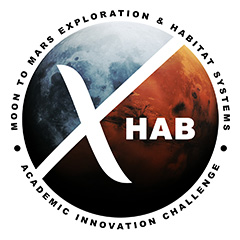
|
UConn ME selected by NASA to Develop Moon to Mars Mission Design Ideas UCONN has been selected as one of six universities to participate in NASA’s 2022 Moon to Mars eXploration Systems and Habitation (M2M X-Hab) Challenge. NASA’s selection, in partnership with the National Space Grant Foundation, will develop innovative design ideas that will help NASA advance and execute its Moon to Mars exploration objectives. This year’s winning […] Keywords: |

|
Prof. Pierce joins the Editorial Board of the ASME Journal of Biomechanical Engineering Dr. David M. Pierce, Associate Professor of Mechanical Engineering and Biomedical Engineering, has been named Associate Editor of the ASME Journal of Biomechanical Engineering. This archival journal reports research results involving the application of mechanical engineering principles to the improvement of human health. The scope of relevant topics ranges from basic biology to biomedical applications […] Keywords: |

|
Artificial intelligence for structural materials design and manufacturing http://s.uconn.edu/meseminar4/23/21 Abstract: After billions of years of evolution, it is no surprise that biological materials are treated as an invaluable source of inspiration in the search for new materials. Additionally, developments in computation spurred the fourth paradigm of materials discovery and design using artificial intelligence. Our research aims to advance design and manufacturing processes to […] Keywords: |
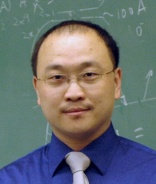
|
Tianfeng Lu elected as a Combustion Institute (CI) Fellow We are proud to announce that Mechanical Engineering Professor Tianfeng Lu has been recognized as one of the 2021 Class of Fellows for The Combustion Institute. Prof. Lu joins a class of 32 accomplished international scholars from industry, academia, and the public sector, and was recognized for “the development of computationally efficient and accurate methods […] Keywords: |

|
Prof. George Matheou recognized with a University Level Teaching Excellence Award “I Hear and I Forget, I See and I Remember, I Do and I Understand” (attributed to Confucius, 551 BC to 479 BC) In addition to his ability to solve significant societal and environmental problems using computational science, Prof. George Matheou is no stranger to educational innovations that explore new ways to involve students in […] Keywords: |

|
SeungYeon Kang joins the ME department We’re thrilled to welcome Dr. SeungYeon Kang as a new Assistant Professor in our Department of Mechanical Engineering. Prof. Kang obtained her PhD in Applied Physics from Harvard University. Her current research interests include nanofabrication with ultrafast lasers, fundamental principles and application of light-matter interaction, 3D printing, additive manufacturing and energy harvesting through unconventional phenomenon […] Keywords: |
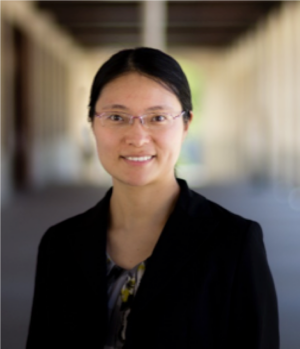
|
Soft materials for soft machines http://s.uconn.edu/meseminar4/9/21 Abstract: Soft machines are transforming the fields of robotics and biomedical devices in that they are capable of sustaining large deformation and interacting safely with human beings. Soft active materials can change their shapes or volumes in response to external stimuli, such as light, heat and electric fields, and are important building blocks of […] Keywords: |
Available Archives